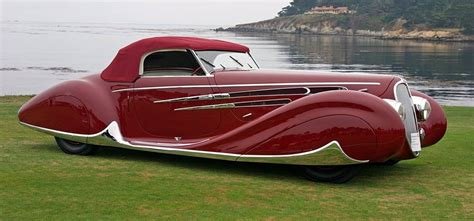The Fascinating World of Vintage Cars: A Collector’s Guide
Are you an avid car enthusiast with a passion for all things vintage? Do you find yourself drawn to the elegance and timeless appeal of classic cars? If so, you’re in for a treat as we take a journey back in time to explore the fascinating world of vintage cars. In this blog post, we will delve into the rich history and cultural significance of vintage automobiles, unveiling iconic models that have left an indelible mark on the automotive industry. We will also decode the intricate terminology associated with vintage cars, shedding light on the art of restoration and the meticulous care required to preserve these timeless relics. Whether you’re a seasoned collector or a first-time buyer, we will provide valuable insights and tips for navigating the vintage car market, as well as guidance on maintaining and preserving the legacy of these automotive treasures. Join us as we embark on a captivating exploration of vintage cars and discover the allure of these pristine beauties.
Introduction to Vintage Cars: A Journey Back in Time
When you think of vintage cars, you are instantly transported back in time to an era where automobiles were more than just vehicles – they were pieces of art. The classic design, the intricate detailing, and the timeless appeal of vintage cars continue to captivate car enthusiasts and collectors alike.
Exploring the history of vintage cars takes us on a journey through the early years of automotive innovation, from the first mass-produced cars to the iconic models that have shaped the industry. Each vintage car has its own story to tell, often reflecting the culture and technological advancements of its time.
It is no wonder that vintage car enthusiasts are drawn to these timeless treasures, appreciating not just the physical beauty of the vehicles, but also the rich heritage and nostalgia they represent. From the roar of the engine to the sleek curves of the body, vintage cars embody a sense of elegance and sophistication that has stood the test of time.
Whether you are a dedicated collector or simply admire the craftsmanship of vintage cars, embarking on a journey back in time through the world of vintage automobiles is sure to ignite a passion for these enduring symbols of automotive history.
Unveiling the Classics: Iconic Vintage Car Models
When it comes to vintage cars, there are certain iconic models that have stood the test of time and continue to captivate enthusiasts with their timeless charm and allure. These classic cars represent a bygone era of automotive design and engineering, and they hold a special place in the hearts of collectors and car aficionados around the world.
One such iconic vintage car model is the Ford Mustang, which made its debut in 1964 and quickly became a symbol of American muscle and performance. With its sleek and sporty design, the Mustang remains a beloved classic that continues to inspire car enthusiasts to this day.
Another legendary vintage car model is the Chevrolet Corvette, which first hit the streets in 1953 and has since become an enduring symbol of American automotive excellence. Known for its stunning design and powerful performance, the Corvette has cemented its status as one of the most iconic vintage car models in history.
These are just a few examples of the iconic vintage car models that have left an indelible mark on the automotive industry and continue to inspire generations of car enthusiasts. Whether it’s the timeless elegance of a classic Cadillac or the raw power of a vintage Porsche, these iconic models remind us of the rich history and enduring appeal of vintage cars.
Cracking the Code: Decoding Vintage Car Terminology
When delving into the world of vintage cars, it’s easy to become overwhelmed by the abundance of unfamiliar terminology. From chassis to carburetor, the jargon can often leave enthusiasts scratching their heads in confusion. But fear not, with a little guidance, decoding vintage car terminology can become a breeze.
One key term to familiarize yourself with is Barn Find. This refers to a vintage car that has been discovered in a state of disrepair, typically stored in a barn or garage for an extended period of time. While it may seem like a dilapidated relic at first glance, these barn finds often hold significant value to collectors and restorers.
Another important phrase to understand is Numbers Matching. This denotes that a vintage car’s major components, such as the engine and transmission, are original and bear matching serial numbers. A numbers matching car is highly sought after in the vintage car community, as it signifies authenticity and originality.
One of the common misconceptions in vintage car terminology is the term Patina. Some may mistake patina for rust or deterioration, but in reality, it refers to the natural aging and wear that occurs on the surface of a vintage car. Patina is often celebrated and preserved by enthusiasts, as it adds character and historical significance to the vehicle.
The Art of Restoration: Transforming Dusty Relics into Pristine Beauties
Restoring vintage cars is a meticulous process that involves transforming neglected vehicles into pristine beauties. It requires a combination of artistic skill, mechanical expertise, and a deep understanding of the car’s history.
When restoring a vintage car, the first step is often stripping the vehicle down to its bare metal frame. This process allows the restorer to assess the extent of the damage and determine the necessary repairs.
Once the bodywork is complete, attention turns to the engine and mechanical components. These parts are often overhauled to ensure the car runs smoothly and reliably.
Finally, the interior of the car is reupholstered and the paintwork is carefully applied to bring the vehicle back to its former glory.
Historical Significance: Exploring Vintage Cars’ Impact on Society
In the 20th century, vintage cars not only represented a mode of transportation but also had a significant impact on society as a whole. The emergence of automobiles revolutionized the way people lived and worked, leading to the development of urban centers and the expansion of industries. Vintage cars played a crucial role in shaping the modern world we live in today.
One of the most notable impacts of vintage cars on society was the newfound freedom and mobility they provided. As the automobile industry grew, people were no longer confined to their immediate surroundings. This led to increased travel, exploration, and the ability to connect with others from different regions, thereby fostering cultural exchange and diversity.
Furthermore, the mass production of vintage cars brought about economic changes, creating numerous job opportunities and fueling consumerism. The automotive industry became a driving force behind technological advancements, resulting in the creation of new materials, designs, and manufacturing processes.
Lastly, vintage cars also had a profound influence on popular culture, shaping trends in fashion, music, and entertainment. The allure and glamour of vintage cars became a symbol of status and luxury, influencing people’s lifestyles and aspirations.
Navigating the Market: Tips for Buying and Selling Vintage Cars
When it comes to buying and selling vintage cars, navigating the market can be a daunting task. With so many options available, it can be overwhelming to know where to start. However, with the right tips and guidance, you can make informed decisions and successfully buy or sell a vintage car.
First and foremost, it’s essential to do thorough research on the vintage car market. Understanding the current trends, popular models, and price ranges will give you a competitive edge. Utilize online resources, join vintage car forums, and attend car shows to gain insights from experts and fellow enthusiasts.
Additionally, when buying a vintage car, it’s crucial to inspect the vehicle thoroughly. Look for signs of rust, mechanical issues, and overall condition. If you’re selling a vintage car, make sure to highlight its unique features, history, and any restoration work that has been done. High-quality photographs and detailed descriptions can significantly enhance the appeal of your car to potential buyers.
Lastly, when it comes to the negotiation and sale process, be prepared to be patient. Vintage cars often have sentimental value to their owners, and emotions can play a significant role in the buying and selling process. Take your time, be respectful of the other party’s perspective, and don’t be afraid to seek professional assistance if needed.
Preserving the Legacy: Maintenance and Care for Vintage Car Owners
Preserving the legacy of vintage cars requires dedication and attention to detail. Maintenance and care are crucial aspects of preserving the historical significance of these timeless vehicles. Vintage car owners must be diligent in their efforts to ensure that these relics are maintained in top condition for future generations to appreciate.
Regular maintenance is essential for vintage cars. This includes routine checks on the engine, brakes, and other critical components. Keeping up with oil changes, spark plug replacements, and tire rotations is also important to ensure that the car remains in a drivable condition.
Aside from regular maintenance, proper care is also crucial for preserving the legacy of vintage cars. This involves storing the car in a climate-controlled environment to prevent rust and corrosion. Additionally, owners should be mindful of the materials used for cleaning and refurbishing the vehicle to avoid damaging the original components.
Preserving the legacy of vintage cars is not only a responsibility for current owners but also a way to contribute to the historical significance of these vehicles. With the right maintenance and care, vintage cars can continue to be enjoyed for years to come.
Frequently Asked Questions
What makes vintage cars so fascinating to collectors?
Vintage cars are fascinating to collectors for their unique design, historical significance, and the nostalgia they evoke for a bygone era.
What are some iconic models of vintage cars?
Some iconic models of vintage cars include the Ford Mustang, Chevrolet Corvette, Volkswagen Beetle, and Porsche 911.
What are some common vintage car terminology that enthusiasts should know?
Common vintage car terminology includes terms such as ‘barn find’ (a vintage car discovered in storage, often in neglected condition), ‘patina’ (the natural aging or wear on a vintage car’s surface), and ‘matching numbers’ (a car with all its original major components).
How do collectors restore vintage cars to their former glory?
Collectors restore vintage cars through a meticulous process that includes repairing or replacing parts, repainting, and ensuring mechanical functionality while preserving the car’s original features and character.
What impact did vintage cars have on society?
Vintage cars have had a significant impact on society, representing technological advancements, cultural and artistic trends, and serving as symbols of prestige, freedom, and individuality.
What tips can vintage car enthusiasts use for buying and selling these vehicles?
Vintage car enthusiasts can navigate the market by researching the history and value of specific models, inspecting vehicles thoroughly, and seeking professional evaluations when buying or selling a vintage car.
How should vintage car owners maintain and care for their vehicles?
Vintage car owners should maintain their vehicles by storing them in a controlled environment, performing regular maintenance, and seeking specialized care for preserving the authenticity and value of their vintage cars.





